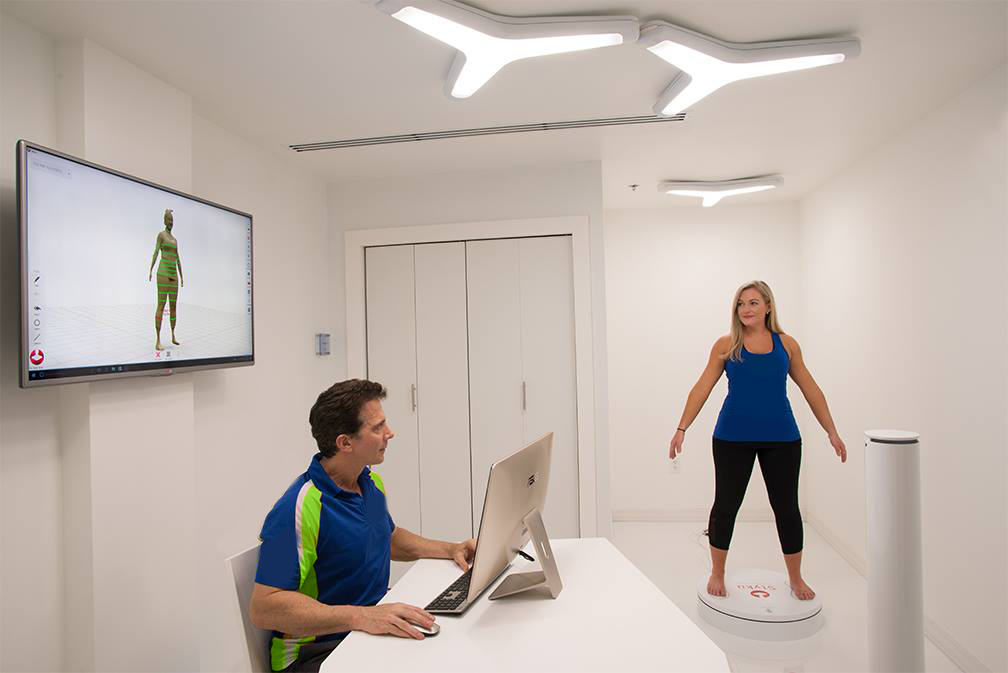An apron stomach, often referred to in medical contexts as a pannus or abdominal apron, is an excess flap of fat that hangs down from the abdomen. It can vary in size and can present both cosmetic concerns and health complications for individuals. To understand this condition fully, it is important to delve into its medical definition, causes, impact, and potential management strategies.
Understanding the Concept of an Apron Stomach
The apron stomach is frequently evidenced in individuals who are overweight or obese, particularly those with significant weight gain. This condition is characterized by a protrusion of abdominal fat that may sometimes extend over the hips and down to the thighs, forming a distinctive “apron” shape. This accumulation of fat can not only affect physical appearance but also lead to a range of health issues, including mobility challenges and skin irritations due to friction. The psychological impact of having an apron stomach can also be profound, often affecting self-esteem and body image.
The Medical Definition of an Apron Stomach
From a medical standpoint, an apron stomach is identified as an overhanging abdominal panniculus. This is essentially subcutaneous fat that accumulates beneath the skin of the abdominal area. Depending on various factors, such as genetics and diet, the characteristics of the apron stomach can differ significantly among individuals. For instance, some may experience a more pronounced apron due to hormonal imbalances, while others may find that lifestyle changes, such as improved nutrition and increased physical activity, can help reduce its prominence. Medical professionals often assess the apron stomach not just for cosmetic reasons but also for potential health risks, as it can be associated with conditions like diabetes and cardiovascular disease.
Common Terms and Synonyms for Apron Stomach
In discussions related to body weight and composition, several terms are often used interchangeably with “apron stomach.” These include:
- Pannus
- Abdominal flap
- Abdominal apron
- Overhang
Understanding these terms can help in communicating more effectively about the condition, whether in medical settings or personal discussions. Additionally, awareness of the various terms can foster a more inclusive dialogue around body positivity, as many individuals may feel stigmatized by the appearance of an apron stomach. It is essential to recognize that body shapes and sizes vary widely, and the language we use can either perpetuate stereotypes or promote acceptance. Furthermore, discussions around apron stomachs can also lead to broader conversations about health, wellness, and the importance of supportive communities in navigating body image issues.
Causes and Risk Factors of an Apron Stomach
The development of an apron stomach is influenced by various factors, including genetics and lifestyle choices. Identifying these causes is crucial for preventing its formation and managing existing cases.

Role of Genetics in Developing an Apron Stomach
Genetics play a significant role in determining body shape and fat distribution. Individuals may inherit traits that predispose them to store fat predominantly in the abdominal region. Studies indicate that genetic variations can affect metabolism, appetite regulation, and fat storage patterns, ultimately contributing to the formation of an apron stomach. For instance, specific genes related to fat cell development and distribution have been identified, suggesting that those with a family history of abdominal obesity may be at a higher risk. Furthermore, epigenetic factors, which involve changes in gene expression influenced by environmental factors, can also play a role in how one’s body processes and stores fat over time.
Lifestyle Factors Contributing to an Apron Stomach
In addition to genetic predisposition, certain lifestyle choices can accelerate the accumulation of abdominal fat, including:
- Poor dietary habits, such as high consumption of processed foods and sugars.
- Lack of physical activity, leading to an energy surplus.
- Frequent hormonal fluctuations, particularly in women, during phases such as menopause.
- Chronic stress, which can result in overeating and weight gain.
Addressing these lifestyle factors is critical to reducing the likelihood of developing an apron stomach. Moreover, understanding the impact of sleep patterns and their relationship with weight gain is essential. Insufficient sleep can disrupt hormonal balance, particularly hormones like ghrelin and leptin, which regulate hunger and satiety. This disruption can lead to increased cravings for unhealthy foods and a tendency to overeat. Additionally, incorporating regular physical activity into one’s routine not only helps in burning calories but also plays a vital role in maintaining muscle mass, which is crucial for a healthy metabolism. Engaging in strength training exercises can be particularly beneficial, as they help to build lean muscle, thereby enhancing the body’s ability to burn fat more efficiently.

Physical and Emotional Impact of an Apron Stomach
The existence of an apron stomach can exert both physical and emotional effects on individuals. These impacts vary widely among people but can significantly alter one’s quality of life.
How an Apron Stomach Affects Body Image
A prominent apron stomach can contribute to negative body image and low self-esteem. Individuals may feel self-conscious about their appearance, resulting in withdrawal from social situations or physical activities. These feelings often stem from societal expectations regarding body shape and size, exacerbating the emotional strain associated with this condition. Furthermore, the pressure to conform to idealized body standards can lead to unhealthy behaviors, such as extreme dieting or excessive exercise, which may ultimately be counterproductive and harmful to one’s overall health.
In addition to societal pressures, personal experiences can also shape an individual’s perception of their body. For instance, past experiences with bullying or negative comments from peers can leave lasting scars, making it difficult for individuals to embrace their bodies as they are. This internal conflict can lead to a cycle of shame and frustration, where the individual feels trapped in a body they do not accept, further diminishing their self-worth and happiness.
Health Complications Associated with an Apron Stomach
Beyond aesthetics, an apron stomach can be associated with several health concerns, including:
- Increased risk of cardiovascular diseases due to high levels of visceral fat.
- Diabetes and insulin resistance, potentially leading to type 2 diabetes.
- Chronic back and joint pain resulting from carrying excess weight.
- Increased risk of certain cancers, notably those related to obesity.
Addressing these issues is important for long-term health and wellness. Moreover, the presence of an apron stomach can also lead to metabolic syndrome, a cluster of conditions that increase the risk of heart disease, stroke, and diabetes. This syndrome is characterized by high blood pressure, elevated blood sugar levels, excess body fat around the waist, and abnormal cholesterol levels, all of which can compound the health risks associated with an apron stomach.
Additionally, the psychological toll of managing these health complications can be significant. Individuals may experience anxiety or depression related to their health status, leading to a cycle of emotional eating or inactivity that exacerbates their condition. It is crucial for those affected to seek support, whether through medical professionals, support groups, or counseling, to navigate both the physical and emotional challenges that accompany an apron stomach.
Prevention and Management of an Apron Stomach
Preventing or managing an apron stomach involves a combination of dietary, exercise, and behavioral strategies. Taking proactive steps can promote overall health and decrease the risk of developing this condition.
Dietary Changes to Prevent an Apron Stomach
Implementing dietary modifications is one of the most effective ways to manage body weight and overall fat composition. Some key changes include:
- Incorporating a variety of fruits and vegetables to increase fiber intake.
- Choosing whole grains over refined grains.
- Reducing the intake of fatty and sugary foods.
- Staying hydrated by drinking plenty of water throughout the day.
Making these changes can help in maintaining a healthy weight and preventing the formation of excess abdominal fat. Additionally, it is beneficial to pay attention to portion sizes and to eat mindfully, which can further aid in weight management. Mindful eating encourages individuals to savor their food, recognize hunger cues, and prevent overeating. Furthermore, incorporating healthy fats, such as those found in avocados, nuts, and olive oil, can help in feeling satiated while still promoting heart health.
The Role of Exercise in Managing an Apron Stomach
Regular physical activity plays an essential role in managing body weight and reducing an apron stomach. Effective strategies include:
- Engaging in at least 150 minutes of moderate aerobic activity each week.
- Incorporating strength training exercises at least twice a week to build muscle.
- Incorporating exercises that target core strength, such as planks and abdominal crunches.
These activities not only promote fat loss but also enhance overall physical health and wellbeing. Beyond structured workouts, integrating more movement into daily routines can also be beneficial. Simple changes like taking the stairs instead of the elevator, walking or biking for short trips, or even participating in active hobbies can significantly contribute to overall calorie expenditure. Moreover, finding enjoyable activities, whether it’s dancing, swimming, or hiking, can make the exercise feel less like a chore and more like a fun part of daily life.
Medical and Surgical Treatment Options
For individuals struggling with an apron stomach despite lifestyle changes, medical and surgical interventions may be appropriate. Understanding these options can help in making informed decisions regarding treatment.
Non-Surgical Interventions for an Apron Stomach
Several non-surgical methods are available that can help individuals manage an apron stomach effectively. These include:
- Prescription medication aimed at weight loss.
- Behavioral therapy, which can support motivation and adherence to healthy habits.
- Weight loss programs that provide structured plans and support.
These methods can contribute to gradual weight loss and associated improvements in body composition. Additionally, incorporating regular physical activity tailored to individual capabilities can enhance the effectiveness of these interventions. Activities such as walking, swimming, or resistance training can not only aid in weight loss but also improve overall fitness and muscle tone, which may further help in reducing the appearance of an apron stomach.
Surgical Procedures to Address an Apron Stomach
In cases where non-surgical interventions are not successful, surgical options may be considered. These can include:
- Abdominoplasty (tummy tuck) to remove excess skin and fat.
- Gastric bypass surgery, which alters the digestive system to reduce food intake.
- Liposuction to remove localized fat deposits.
These surgical interventions can significantly reduce the appearance of an apron stomach and improve health outcomes. It is important to note that surgical options often require a commitment to lifestyle changes post-procedure to maintain results. Patients may need to engage in follow-up care, including regular check-ups and nutritional counseling, to ensure long-term success and prevent weight regain.
Conclusion
The psychological aspects of undergoing surgery should not be overlooked. Many individuals experience a boost in self-esteem and body image following surgical procedures, which can lead to a more active lifestyle and improved mental health. Support groups and counseling services can provide valuable resources for those navigating the emotional journey before and after surgery, ensuring a comprehensive approach to treatment.
Discover effective solutions to manage and reduce apron stomach symptoms. Talk to a wellness expert today!






